Mobilisation of violent settlers has intensified Palestinians’ fears of attacks and displacement
Alison Killing, Chris Campbell and Peter Andringa in London and James Shotter in Jerusalem, FINANCIAL TIMES, SEPTEMBER 17 2024
The village of At-Tuwani, a Palestinian farming community of around 1,600 people, is nestled in a small valley in the occupied West Bank, south of the city of Hebron.
Since the 1980s, when the Israeli settlement of Ma’on was established on a nearby hill, the villagers’ land has been steadily eaten away.
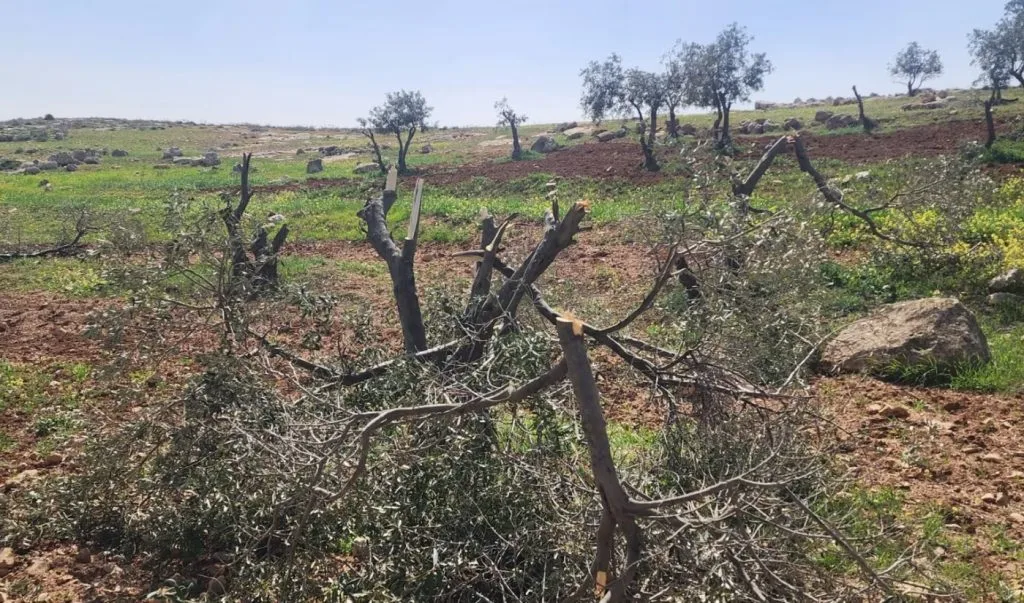
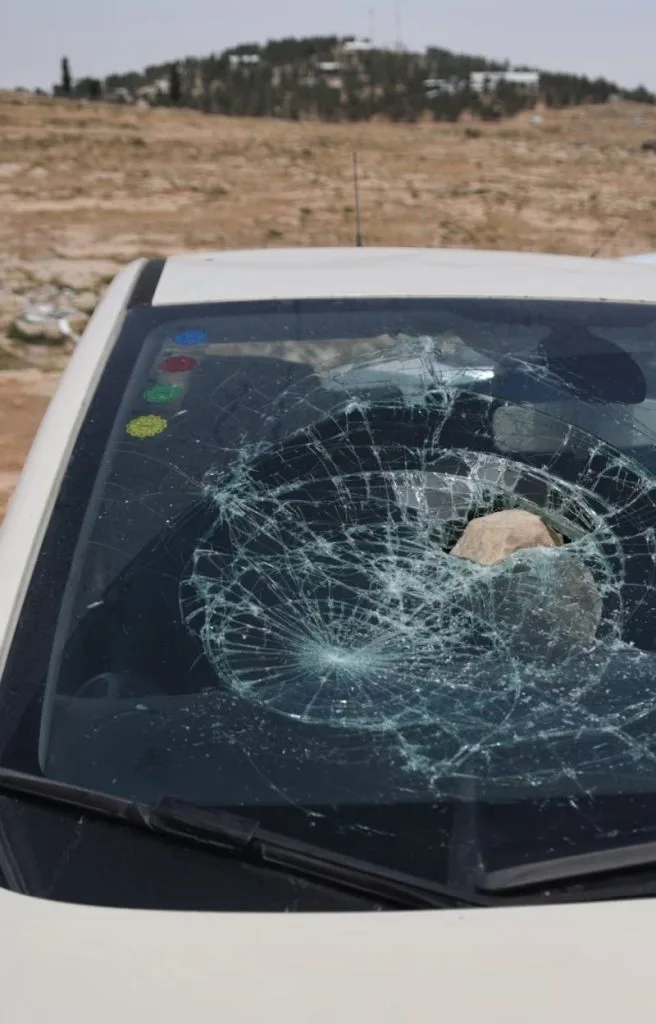
But with Israel’s regular army now deployed to the front lines, they say the pressure has intensified and the dynamic has changed: settlers called up to serve as reservists are now responsible for law enforcement.
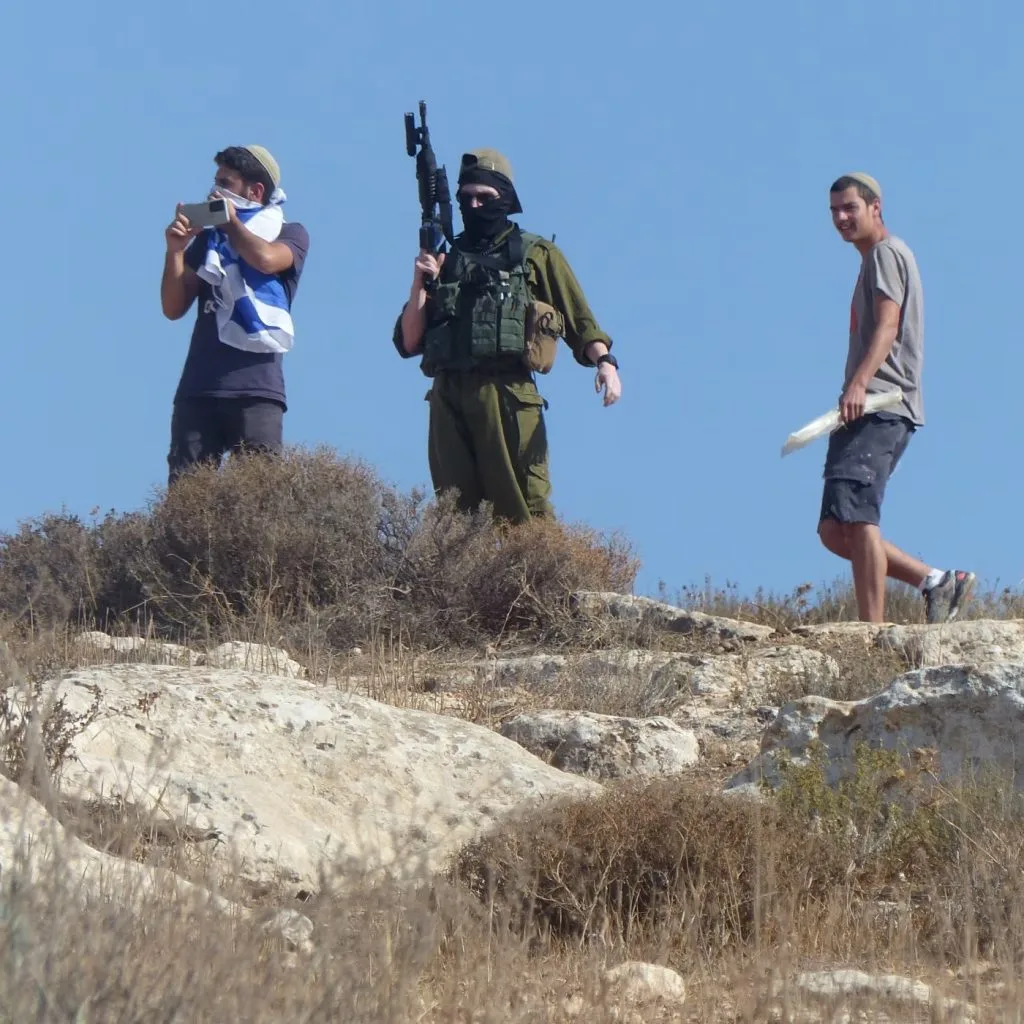
The heightened violence experienced by the villagers of At-Tuwani is part of a broader shift in the dynamics of the West Bank that has taken place in the aftermath of Hamas’s devastating October 7 assault on Israel.
Last year’s attack — in which militants killed 1,200 people and took a further 250 hostage — was one of the darkest days in the country’s history. In response, Israel launched a ferocious offensive in Gaza that has killed more than 41,000 people, according to Palestinian officials, and fuelled a humanitarian catastrophe. The ripples of the conflict have also been felt in the occupied West Bank, where Israel has ramped up military activities. There have been sweeping movement restrictions on Palestinians, blocking access to cities, towns and villages, repeated raids in cities such as Jenin and Nablus and increased security around Jewish settlements.
The roughly 500,000 people living in these West Bank settlements — which most countries regard as illegal — are a heterogenous group. Some live there for ideological or religious reasons; others have moved due to considerations such as the cost of living. While only a relatively small number are involved in attacks on Palestinians, activists say over the past year those who are have been emboldened.
The FT has spoken to more than 20 villagers and Palestinian, Israeli and international activists about the violence locals face from both settlers and the Israeli state, and reviewed hours of footage of incidents. While much of it is of a low-level, slow-burning kind, experts say that combined, it adds up to a systematic campaign to drive Palestinian villagers off their land.
With much of Israel’s regular army now deployed to Gaza or the border with Lebanon, thousands of settlers have been called up to fill the military’s gaps in the West Bank. As a result, they have been granted new powers, including the ability to arrest people and declare closed military zones.
“What changed for us is that after October 7, there was an excuse for [settlers] to form a military force,” says Mohammad Rabaei, At-Tuwani’s mayor.
The Palestinian village
Mohammad Hureini was born and grew up in At-Tuwani’s small farming community. On October 12 last year, he says settlers set up a military-style tented observation post on land that belongs to his family, close to their home, and planted Israeli flags in the ground and in a nearby tree. Photographs seen by the FT confirmed the location of the tent and flags.
The same day, Hureini says the settlers began to cut branches off the family’s fig trees and grape vines. When Hureini and some friends went to challenge them, he says they were forced to retreat after being threatened with guns. Hureini says the settlers then trailed them back to At-Tuwani.
The settlers, wearing military-style uniforms and standing between greenhouses at the top of a rocky slope, began to shoot into the village, narrowly missing Hureini. Basel Adra, an activist and documentary filmmaker also from At-Tuwani, saw what happened. It was “terrifying”, he says. “They were lucky that they found a wall to hide behind.” The settlers followed the men to the Hureini family’s home, where Hureini says they assaulted his uncle.
The next day, Hureini was at home preparing lunch when he heard shouting in the street and saw people running to their homes, visibly scared. Heading to investigate, he saw two settlers who had entered the village with a soldier. Hureini and Basel’s cousin, Zakariya Adra, was confronting one of the settlers, a man from Havat Ma’on, who was part of the outpost’s security squad. He was armed with a rifle.
Footage verified by the FT shows a short altercation, which quickly escalates.
The settler first shoves Zakariya in the chest and, as Zakariya steps back, shoots him in the stomach. He collapses and Palestinian men rush to help him. The settler walks away while a soldier in uniform watches on. “He told me, ‘Go back. Go back.’ And then he came and he shot me directly,” Zakariya tells the FT. “After he shot me, everything went totally black.”

Zakariya was admitted to the ICU, and spent 82 days in hospital. He says doctors discovered he had been shot with a “dum-dum” — a round that expands on impact, amplifying the damage caused. He needed four rounds of surgery on his stomach and had to have part of his pancreas removed. His injuries were so severe that he had to be fitted with a colostomy bag. During his stay in hospital Zakariya says he lost almost 30kg.
The IDF said investigations were opened by the Israeli police into both incidents in At-Tuwani. It did not comment on the alleged attack on Hureini’s uncle, saying it could not provide details of an ongoing inquiry.
The settler who shot Zakariya had his gun licence revoked, but faces no charges. When Zakariya went to the police station to file a complaint, Hureini said he was accused of throwing stones and ordered to pay a 1,000 shekel (around $260) bond.
“A real-time examination revealed that the published video does not embody the incident in its entirety and [there are] therefore no grounds to pursue further proceedings against the soldier,” said the IDF when asked about the member of the military present during the shooting of Zakariya.
The Israeli police said Zakariya had been interviewed about his “potential involvement in a disturbance and stone-throwing incident that escalated to gunfire”, and that afterwards he “signed a financial undertaking, which is not a fine, to secure his availability for any further questioning that may be required”. It declined to comment on the investigation into the shooting, saying that it was “active and ongoing”.
Settlers now sit in the observation position overlooking At-Tuwani around the clock, Hureini says, shouting at villagers and playing music with lyrics about killing Palestinians.
Settler incidents near At-Tuwani on October 12–13 2023

Basel Adra says incidents like this have made it near impossible for villagers to earn a living. “Almost none of the families picked their olive trees, almost no one ploughed their land, and now no one is allowed to graze their sheep,” he says. Young people from At-Tuwani organised donations to support them, “but it wasn’t enough for all of them”, adds Hureini.
Attacks on crops and livestock often peak at key points in the agricultural calendar, with the aim to make farming unviable, according to Ori Givati of Breaking the Silence, an organisation of former Israeli soldiers who served in the occupied territories and who want to see an end to Israel’s occupation of Palestinian land.
Even before October 7, 2023 had been a bad year for settler violence. OCHA, the UN Office for the Coordination of Humanitarian Affairs, recorded an increase in attacks on Palestinians after Benjamin Netanyahu’s coalition with far-right and ultra-religious groups took power in December 2022. But after Hamas’s attack, violence soared: last year, incidents per week were more than 40 per cent higher after October 7 than before it.
It has also become more extreme. A report by Acled, an international conflict monitoring group, documents a sharp rise in incidents involving firearms. It also highlights the changed profile of the instigators. According to the report, aggressive acts are now increasingly carried out by people with a quasi-military status — settler soldiers, settlement security squads or individuals in the presence of the military.
Night after night, men in uniform come to the Palestinian villages, locals and human rights organisations say. Solar panels are smashed and water tanks punctured. Homes are set on fire. Multiple videos reviewed by the FT support this testimony. Campaigners say phones are confiscated to destroy evidence. In one village, Adra says settlers pointed guns at a man, and told people: “If you don’t leave in 24 hours, you’ll be shot.”
According to the UN, 1,627 people, including 794 children, have been displaced due to settler violence and access restrictions since October 7. According to the rights group B’Tselem, 19 Palestinian herding communities have been displaced.
“The physical attacks and the physical violence . . . we believe it’s the state’s strategy,” Adra adds. “The state’s agenda is ethnic cleansing. It’s to make us live in fear.”
The Israeli settlement
The residents of the nearby settlement of Ma’on and its outpost Havat Ma’on present themselves as a tight-knit farming community. Ma’on is home to about 80 families, with many residents working in agriculture. Others are teachers, social workers and nurses. There is a shooting range, an artist’s studio and B&Bs where visitors can stay in simple cabins. The settlement’s website describes an “open view and wonderful neighbours”.
But for many Israelis, the Havat Ma’on outpost has long been controversial. It is “known as one of the violent settlements”, says Dror Sadot, speaking to the FT before moving on from her role as a spokesperson for Israeli human rights organisation B’Tselem.
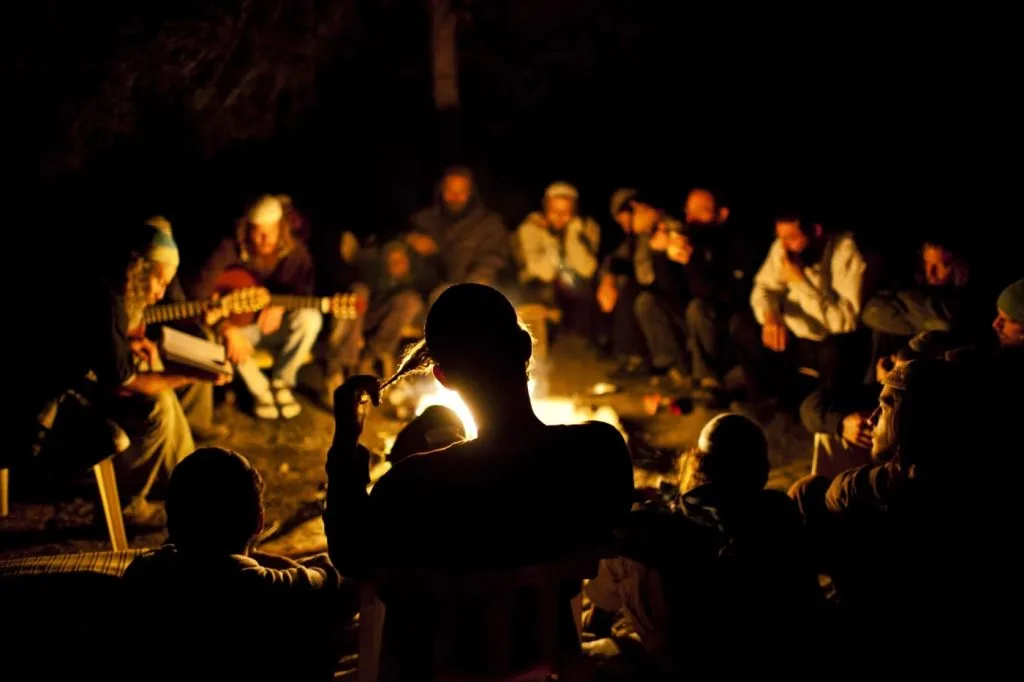
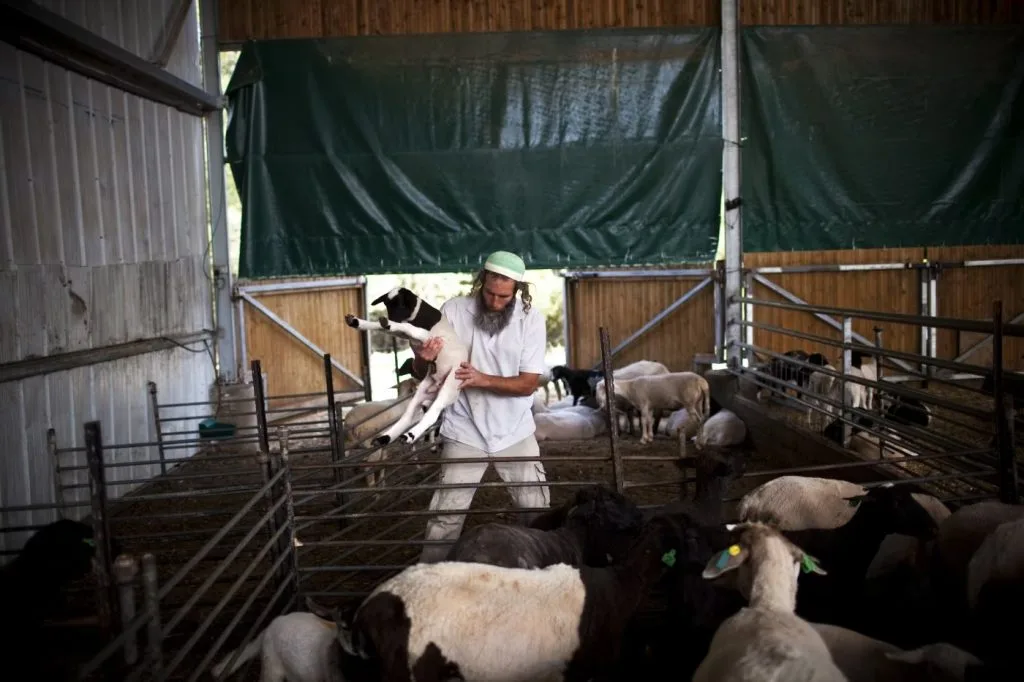
Photos taken in 2010 show a bucolic lifestyle of the Havat Ma’on settlers. Left: Men sing and pray around a fire in the forest. Right: Yehoshafat Tor, one of Havat Ma’on’s founders, works at his goat pen © Yoray Liberman
Most countries regard the West Bank settlements as illegal — the Geneva Conventions prohibit the transfer of an occupying power’s civilians into the territory it occupies. In July, Israel’s occupation of Palestinian territories was ruled illegal in an advisory opinion delivered by the International Court of Justice, the UN’s highest court.
Outposts are settlements that are built without formal permission from the authorities and are illegal even under Israeli domestic law. Many are established with just a few caravans or makeshift structures, before being gradually upgraded. The UN said last year that of the 279 Israeli settlements in the West Bank, at least 147 were outposts.
In 2002, several settlers were convicted of planting a bomb at an Arab school in Jerusalem. A settler from Havat Ma’on was initially detained, but then released. Yehoshafat Tor, one of Havat Ma’on’s founders, responded to the incident a year later, telling The New York Times “the Torah says we should kill all the Arabs”. In 2006, Israeli defence minister Amir Peretz identified Havat Ma’on as a problematic outpost because of the settlers’ repeated attacks on local Palestinian children.
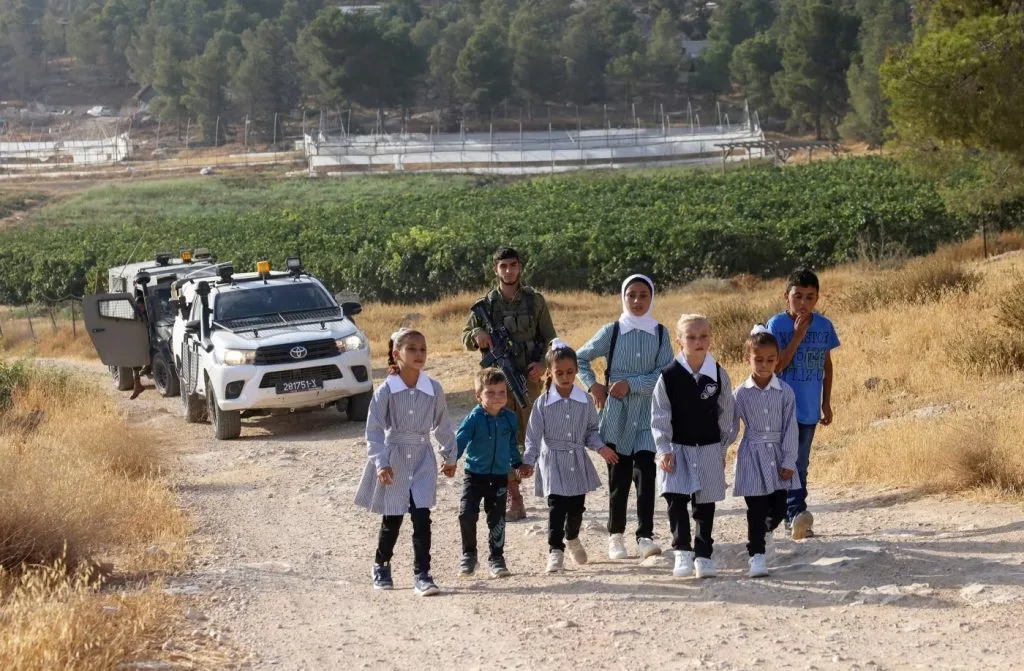
In late 2022, Tor was crowdfunding to pay off debts. In a video, he complains of “nonstop fighting and demonstrations on Shabbat and holidays.” He says sheep worth 500,000 shekels (about $130,000) had been stolen.
Several years earlier, the farm buildings and house he and his wife had built in Havat Ma’on were demolished by the Israeli government — a relatively rare instance of the enforcement of demolition orders in illegal outposts.
The FT made repeated attempts to contact residents of Ma’on and Havat Ma’on, including Tor, in order to visit the settlement and for comment, without success. The Israeli government did not respond when the findings of this investigation were put to it.
But in an interview with the FT this year, Daniella Weiss, a veteran hardline settler leader, denied outright that settlers instigated violence against Palestinians in the West Bank. “I’m ready to swear on it in any Supreme Court . . . No Jew starts a conflict with Arabs,” she said. “Everything that is evolving around [this topic] is one thing: a plan to try to establish another state inside the country of the Jews.”
How settlers have appropriated the land around At-Tuwani







Both Ma’on and Havat Ma’on are supported by One Israel Fund, a US charity, which provides security equipment and financial assistance to settlements. In early 2020, the fund’s director of tourism, Eve Harow, who lives in a nearby settlement, visited Havat Ma’on for a short film.
In the video, Harow discusses security with Rabbi Jonathan Gabbai, a Havat Ma’on resident who grew up in Texas. “There are constantly Arabs trying to steal,” says Harow as Gabbai concurs. Harow continues: “You’re out here in an area that otherwise could be overrun by Arabs.”
Speaking to the FT, Harow said that the presence of Ma’on and other Jewish settlements in the area were “preventing the creation of a Jihadist entity whose stated goals are to repeat the massacres of October 7, albeit on a larger scale”.
One Israel Fund said it thoroughly vets projects and that its work includes providing “preventive, civilian security equipment for Ma’on and Havat Ma’on, [which] have come under frequent violent attack from their surrounding neighbours”.
The role of the state
Israel has occupied the West Bank — which Palestinians seek as the heart of a future state — since capturing it from Jordan in the 1967 war.
A burst of diplomacy in the 1990s, aimed at paving the way for a two-state solution, divided the territory into what was meant to be a temporary patchwork of jurisdictions, known as Areas A, B and C. But after years of failed peace talks, the structure has ossified, and Area C — subject to Israeli military and administrative control — has been the focus of settlers’ efforts to seize Palestinian land.
The divisions of the West Bank


Many settlers have economic motivations for living in the West Bank. But other, more ideological settlers, believe they have a religious right to live there.
In an interview with The New Yorker last year, Weiss claimed that the “borders of the homeland of the Jews are the Euphrates in the east and the Nile in the south-west” — an area that encompasses not just the West Bank, but also numerous other Middle Eastern countries. “The first nation that got the word from God, the promise from God — the first nation is the one who has the right to it,” she said, adding that the settlements also served to prevent the creation of a Palestinian state.
“The state and the settlers are basically aiming for the same goal, of taking the land,” says Sadot, formerly of B’Tselem. “Israel is doing it by official means . . . [placing] extreme limitations on [Palestinians’] building and infrastructure. And the settlers are doing the same thing in an unofficial way.”
Although the outposts are illegal under Israeli law, Sadot adds, Israel allows them to stay and violent settlers are not held accountable for their actions. “And this is not by mistake.”
Dror Etkes, of the Israeli human rights organisation Kerem Navot, estimates that settlers have “blocked access” to an extra 37,000 acres of Palestinian land since October 7.
And there is no way for Palestinians to get it back, says Diana Buttu, a lawyer and analyst who previously advised Mahmoud Abbas, the Palestinian president. “Once you’re gone, you’re gone. They take over the land and there’s no turning back,” she says, adding that maintaining these settlements “requires violence and force”. “To take land . . . to keep an army there . . . All of it requires violence.”
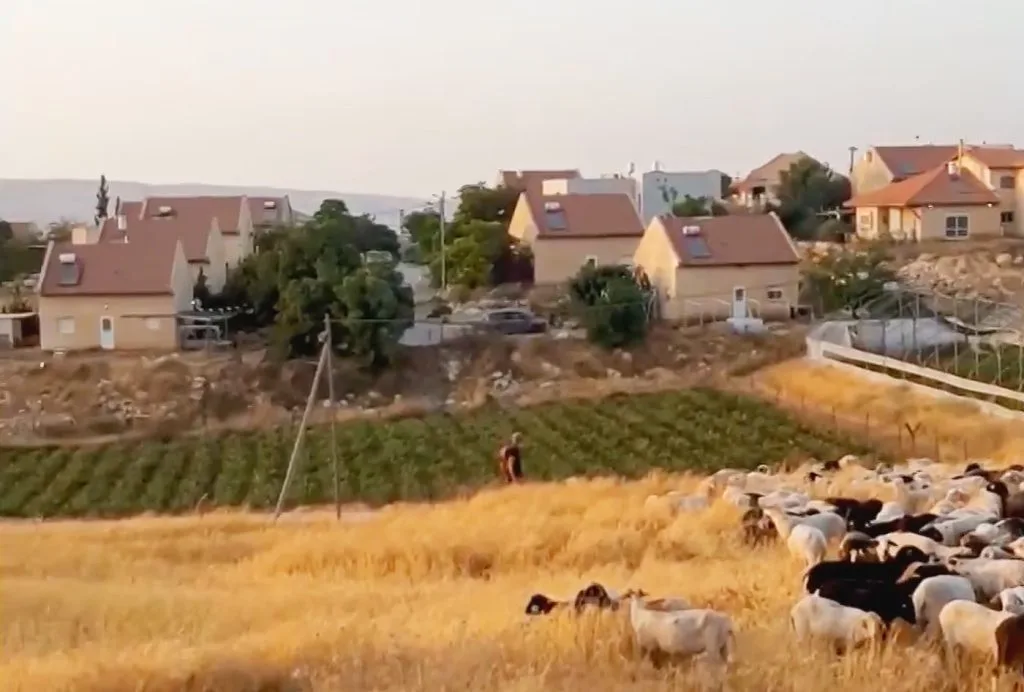
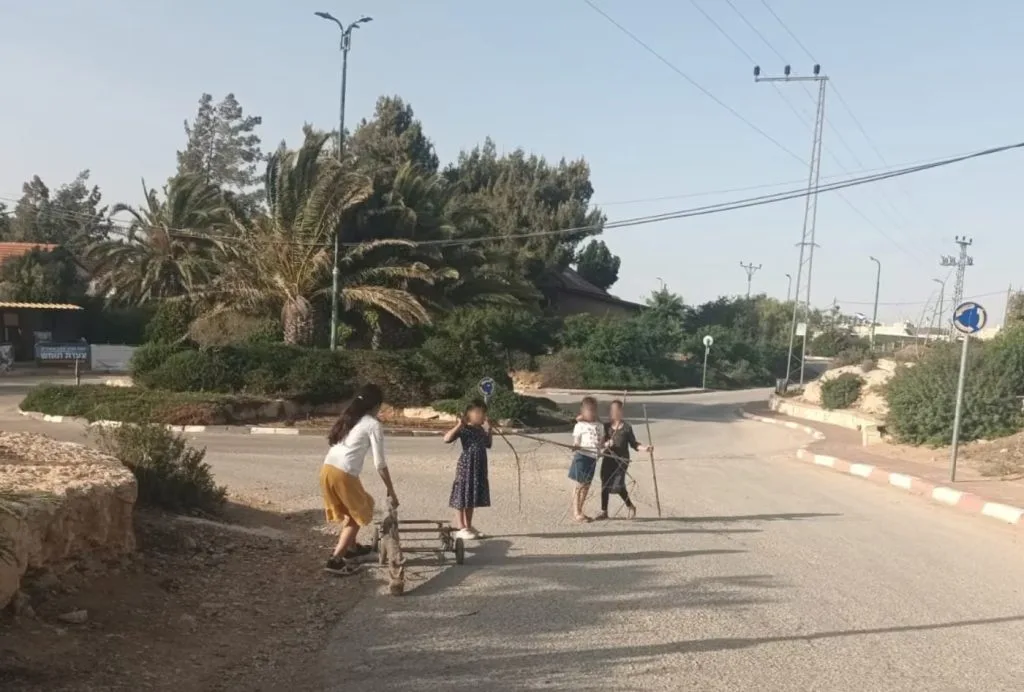
Left: the Israeli settlement of Ma’on is home to about 80 families, with many residents working in agriculture. Right: children play in the street in Ma’on in 2022 © KDS Studio King David/YouTube; Ma’on Facebook page
Settlers account for about 9 per cent of Jewish Israelis. But from a fringe group in the aftermath of the 1967 war, they have grown to wield influence far beyond their numbers. Polls suggest that support for the settler movement is highly correlated with political affiliation. Leftwing Israelis tend to view the settlements critically, while rightwing Israelis support them. As Israeli politics has shifted to the right over the past two decades, so support for the settlements has grown.
“[Over time, the settlers] managed to turn the settlements into something that’s part today of the Israeli mainstream,” says Nimrod Nir from Agam Labs, a research institute at the Hebrew University of Jerusalem. “And the war in a sense kind of accelerated the decrease in antagonism [towards the settlements].”
When Netanyahu returned to power in 2022, his coalition was dependent on two far-right parties led by ultranationalist settlers: Itamar Ben-Gvir, who became minister of national security; and finance minister Bezalel Smotrich, who also holds a portfolio in the defence ministry that gives him powers over civilian affairs in the West Bank.
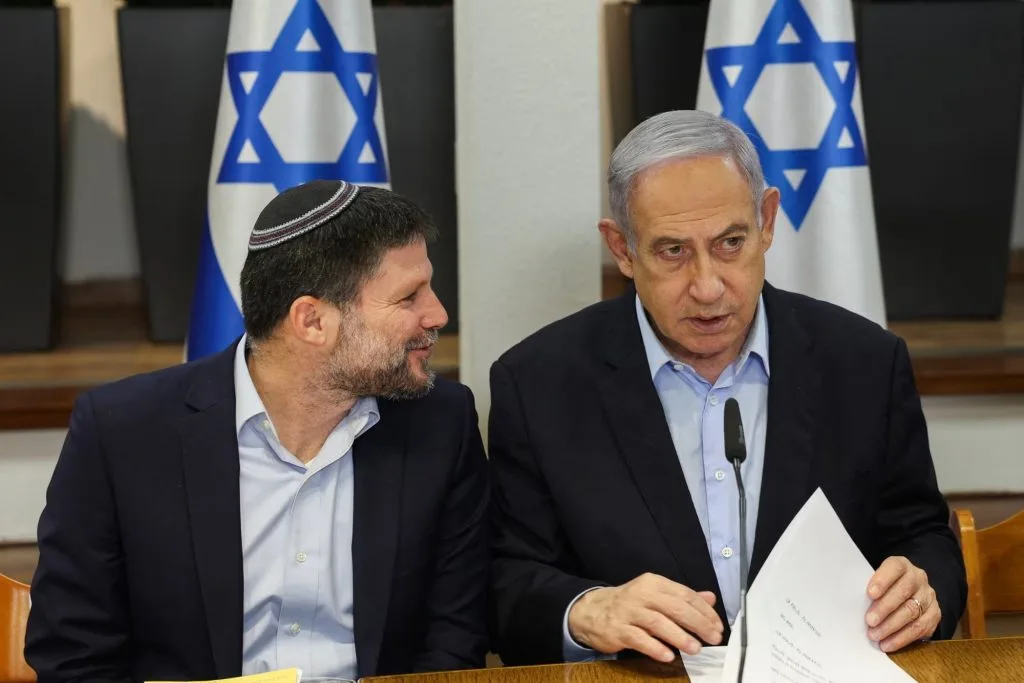
Both have a long history of hostility towards the idea of a Palestinian state. Ben-Gvir was convicted in 2007 of inciting racism against Arabs and supporting a terrorist organisation.
Smotrich has pushed a string of decisions aimed at entrenching Israeli control of the West Bank. He said in June that while the international community “can announce day and night that they recognise a Palestinian state, we will establish facts on the ground and guarantee that a Palestinian state will never be established”.
In response to the increase in settler violence, the international community has begun to take action. Between them, the US, EU, UK and Canada have placed sanctions on 19 settlers, and 11 entities for harassment of Palestinians. Meanwhile, France has imposed travel bans on 28 settlers. “Extremist Israeli settlers are threatening Palestinians, often at gunpoint, and forcing them off land that is rightfully theirs,” then UK foreign secretary Lord David Cameron said after the UK imposed sanctions in February.
As settler violence has surged, even some IDF officials have expressed concerns.
Yehuda Fuchs, an Israeli major general who oversaw operations in the West Bank until he stepped down in July, said at his handover ceremony that “ultranationalist criminal activity has raised its head under the cover of the war and the lust for revenge”. He added that “even if the perpetrators are a minority, those who are silent and fail to exclude them bring criticism upon [all settlers]. To me, this is not Judaism.”
Settler soldiers
The military plays a central role in the lives of many Israelis. While Arab Israelis and ultra-orthodox Jews rarely serve in the army, for the rest of the country compulsory national service is a right of passage. According to the International Institute for Strategic Studies, the country’s standing army of 170,000 is supported by a further 465,000 reservists — a large proportion of the country’s 9.9mn people. Activists say that the link between the army and the West Bank settlers is particularly tight.
“I would say it’s completely intertwined,” says Givati, the former soldier. “Settlers came to our base for dinners. Soldiers go to settlers’ homes for dinners.” The settlement security teams and the army train together, he continues. “Soldiers are also settlers themselves.”
Even before October 7, soldiers in the West Bank frequently dealt violently with Palestinians. Givati says the army used patrols and checkpoints to make its presence felt. His most recent tour was in 2016: “The first thing . . . our commander told us is our mission is to make all of the Palestinians in our area feel like they cannot lift their heads up.”
In the wake of Hamas’s deadly assault, settlers from across the West Bank were mobilised as the lines between the military and settlers blurred further. “Now those same figures are indistinguishable,” says a researcher from the US who conducts field work in the Palestinian territories and asked not to be named for fear of reprisals.
Among those called up was Bezalel Talia, a settler and reservist from near Ma’on already well known among Palestinians following a number of reported confrontations with locals.
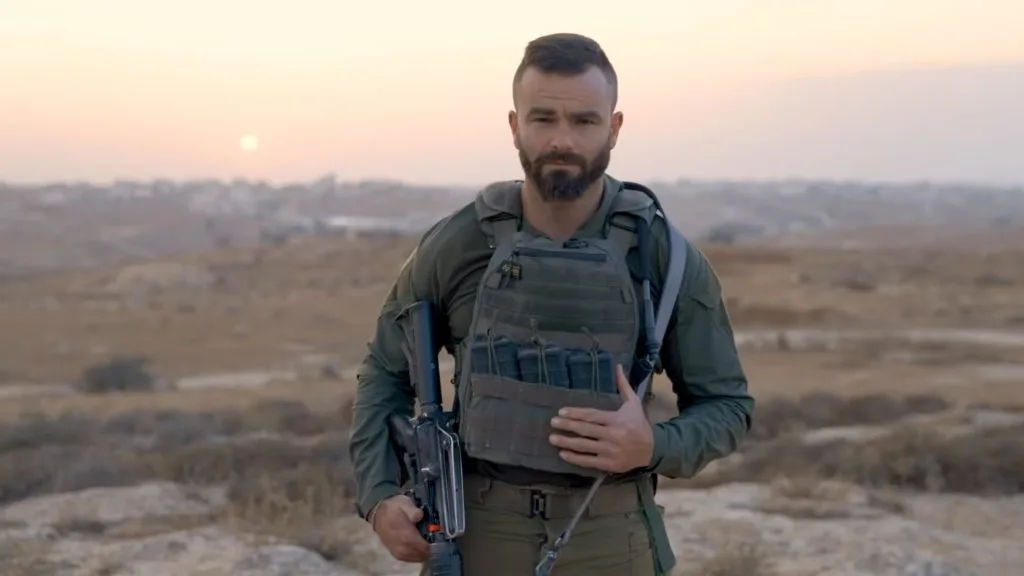
On the morning of October 7, Talia was at his farm when he woke to explosions in the distance. His sister called shortly afterwards. Their mother, brother-in-law and his children were at a kibbutz close to the Gaza border and under attack. Bezalel and his brother loaded their car with weapons and drove towards the town.
Their brother-in-law’s family were safe, but as they approached their mother’s house, they saw a body. She had left home to go to her grandchildren and reassure them. Instead she had been shot and killed in the street.
“My mother, the hero and the brave Marcel Talia, may her memory be blessed,” Talia wrote that evening on Facebook. “The Israel government will do everything so that her murder will not be in vain.”
Talia is now a company commander in Regional Defense Battalion 7771, composed of settler reservists from Ma’on and other nearby communities. The battalion is responsible for the security of 24 settlements and a series of nearby outposts, including Ma’on and Havat Ma’on.
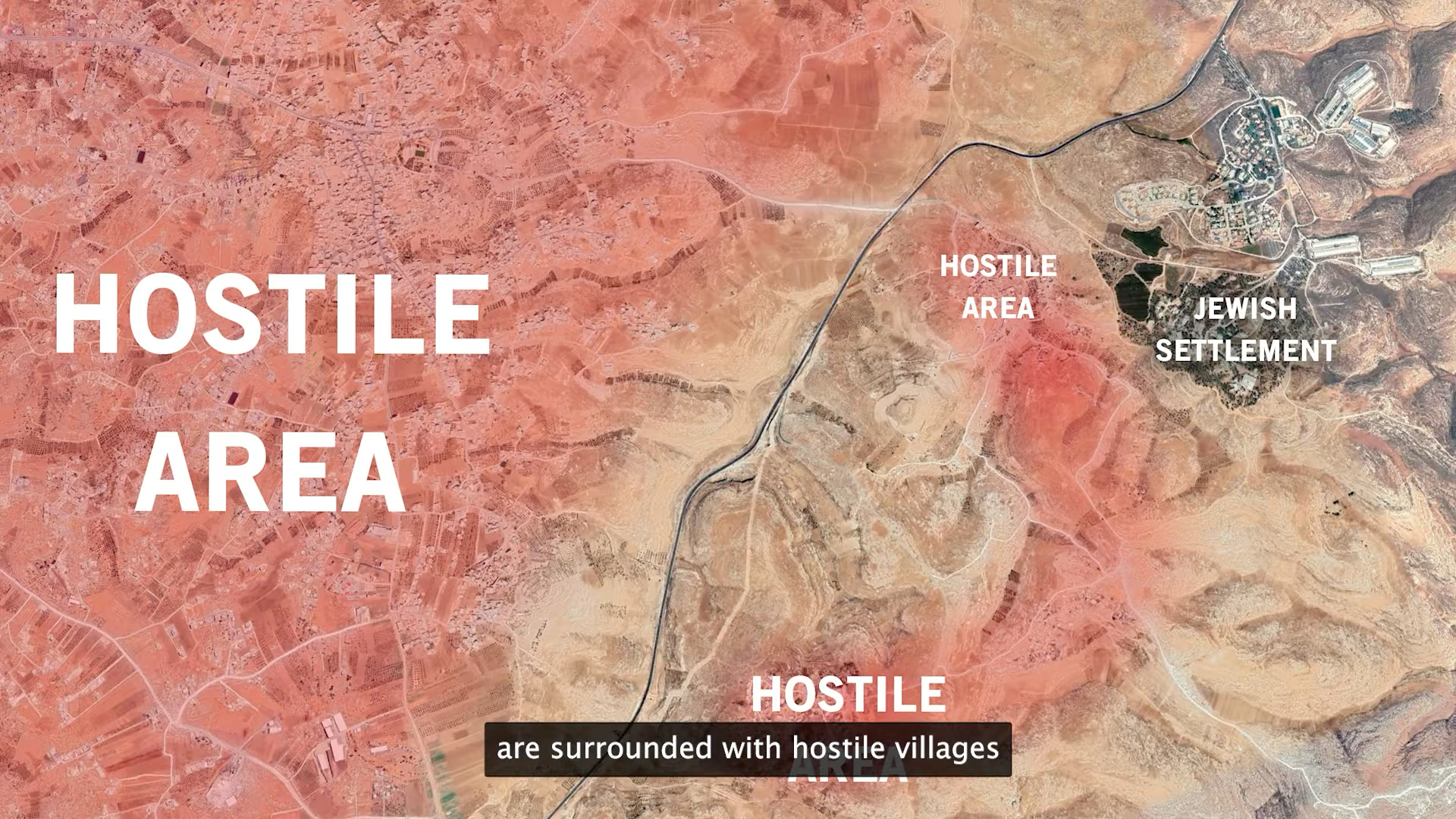
In a fundraising video for the battalion, a sergeant major explains that these settlements are surrounded by hostile villages, over a map with At-Tuwani and other Palestinian villages shaded in red.
“Almost all of the soldiers in our area are settlers from the outposts and the farms,” says Basel Adra, from At-Tuwani.
Dozens of photos and videos reviewed by the FT confirm that many of the soldiers involved in incidents around At-Tuwani since October 7, including the shooting into the village on October 12 and establishment of the tented observation post, come from the Ma’on defence unit.
Soldiers from the Ma’on unit are involved in incidents around At-Tuwani

Activists and local Palestinians say that it can often be difficult to tell whether the armed, khaki-wearing men near At-Tuwani are soldiers or settlers.
“You see a soldier . . . and it’s actually unclear if they are on duty, in the reserves, a settlement security guard or just some random settler who decided to put on a military uniform that he bought,” says the US researcher, adding that the newly mobilised settlers are also less professional than the soldiers they replaced. “They come in, incredibly aggressive, and escalate it right away.”
Many have far-right symbols on their uniform, he adds. “A lot of them have a Third Temple movement patch,” he says, while others wear a patch symbolising the coming of the Messiah. The Temple Mount, or Haram al-Sharif, in Jerusalem, is the holiest site in Judaism and the third-holiest in Islam. In recent years, Jewish far-right politicians and activists have sought to exert increasing control over the site, and some extremists ultimately seek to replace the al-Aqsa mosque with a Third Temple.

Photographs reviewed by the FT confirm that some settler soldiers wear patches combining the Israeli flag with a punisher skull, including Talia himself. The symbol has been adopted by the US far right.

The FT spoke with a number of local Palestinians and international activists who had interacted with Talia in his role as a military commander. One said there had been incidents where he searched people’s phones for material about Gaza and beat them if he found anything.
Sonya Epstein, an activist from the US, says Talia is “one of the most aggressive settler soldiers in the area and has continuously harassed and done a lot of harm to Palestinians”.
When a group of activists who were in the West Bank to document the behaviour of the army and settlers started to film Talia and his men in April, several Palestinian and international activists who were also present say he had them arrested on charges of recording a military operation.

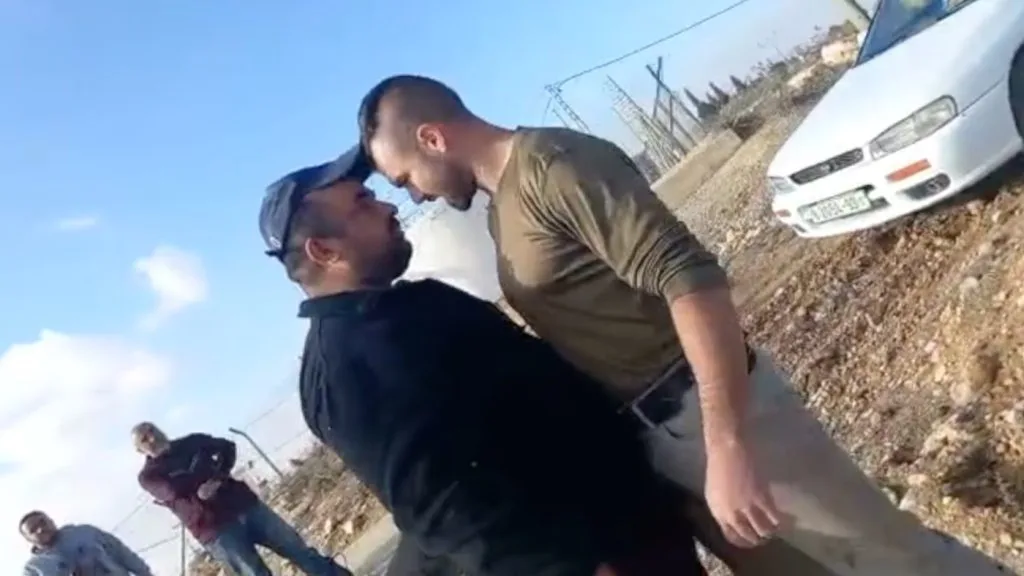
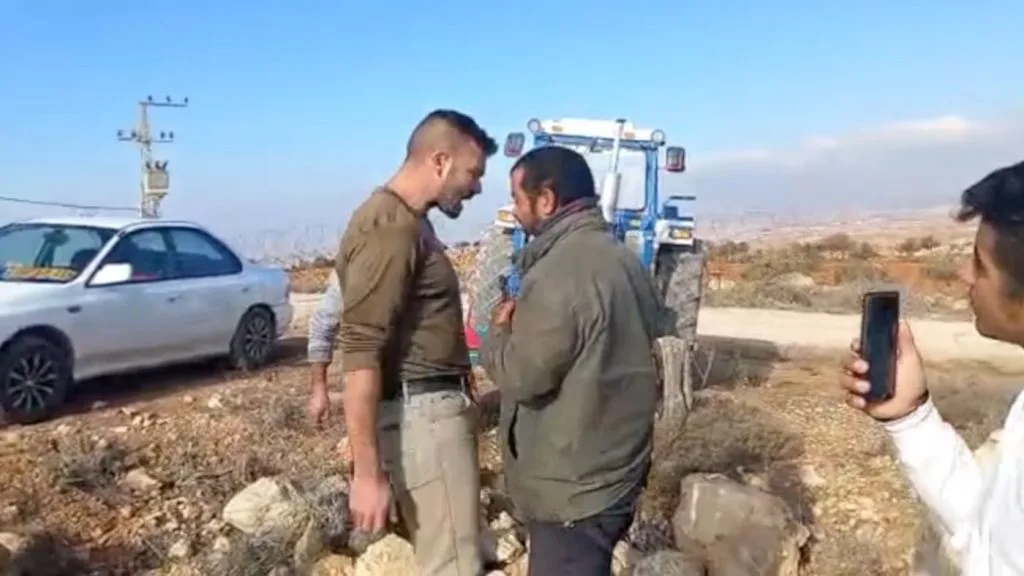
Bezalel Talia has long been notorious among Palestinians and activists for his aggressive interactions with locals. In this incident in 2022, he was recorded intimidating a group of Palestinian farmers preparing to sow crops on their land © B’Tselem
Many of the settlers recently called up to the army will become agitated over the course of an interaction with Palestinian villagers, the US researcher who declined to be named says, but Talia is “automatically screaming, pointing his gun, yelling”.
The researcher spoke of an incident with a group of shepherds and their flock of about 1,000 sheep in a valley near the settlement of Carmel, a couple of kilometres north-east of Ma’on.
“Out of nowhere comes down the mountain a group of settler soldiers who then detain us,” he says. The soldiers screamed at the shepherds to sit on the ground. “Right there, on the spot, Bezalel Talia declared a 30-day closed military zone for the privately owned Palestinian land that the shepherds graze on every single day.” Normally zones are set up for 24 hours, maybe a week, he says, adding that the shepherds were now being deprived of their land for a month at a vital time in the agricultural calendar.
In response to online criticism from a pro-Palestinian activist group working in the South Hebron Hills who referred to him as a “terrorist settler”, Talia wrote on Facebook that they were Israel haters whose goal was to oust him from the IDF.
“We are either hunters or hunted,” he said in another post. His unit has been accompanied by a professional photographer, with Talia posting the photos on his Instagram. Shortly after the FT approached Talia for comment, his TikTok account disappeared. He blamed the company: “TikTok closed my account because I’m a proud Zionist. Anti-Semitic social network,” he wrote on Facebook.
A recent profile in a settler newspaper shows Talia in a more positive light: as a fitness coach turned soldier and a hero of October 7. In the article he talks about living a simple life on an outpost with his family. Together with his siblings, he says he runs the farm and raises sheep.
“I see that this paper is not a friend of Israel,” said a man claiming to be Talia’s brother Yedidia when the FT called the number on Talia’s website. Talia did not respond to a detailed list of questions sent by email.
The IDF said it was “unaware of the claims detailed in relation to the commander” when asked about alleged incidents involving Talia. “Should complaints be received in this regard, they will be handled as per protocol by the relevant body.”
But for many West Bank Palestinians, the mobilisation of settlers like Talia over the past 12 months has left them increasingly fearful for the future. Hureini, the villager from At-Tuwani who watched a settler shoot his friend Zakariya, says “today it starts with my land. But who knows, maybe tomorrow it will be my home.”
Additional reporting by Toru Tsunashima and Polina Ivanova.
Videos and photos of confrontations between settlers and Palestinians in the opening of this piece from B’Tselem, Michal Hai and activists. Drone footage, historical aerial imagery, settler area of control analysis and other map data from Kerem Navot. 2024 satellite imagery from Planet Labs.
Leave a Reply
You must be logged in to post a comment.